Our large, complex bodies need blood to deliver nutrients to and remove wastes from our trillions of cells. The heart, as discussed in the previous chapter, pumps blood throughout the body in a network of blood vessels. Together, these three components—blood, heart, and vessels—make up the cardiovascular system.
Virtually every cell, tissue, organ, and system in the body is impacted by the circulatory system. This includes the generalized and more specialized functions of transport of materials, capillary exchange, maintaining health by transporting white blood cells and various immunoglobulins (antibodies), hemostasis, regulation of body temperature, and helping to maintain acid-base balance. Table 10.1 summarizes the important relationships between the circulatory system and the other body systems.
| System | Role of Circulatory System |
|---|---|
Digestive
 |
Absorbs nutrients and water; delivers nutrients (except most lipids) to liver for processing by hepatic portal vein; provides nutrients essential for hematopoiesis and building hemoglobin. |
Endocrine
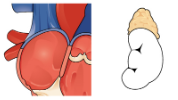 |
Delivers hormones: atrial natriuretic hormone (peptide) secreted by the heart atrial cells to help regulate blood volumes and pressures; epinephrine, ANH, angiotensin II, ADH, and thyroixine to help regulate blood pressure; estrogen to promote vascular health in women and men. |
Integumentary
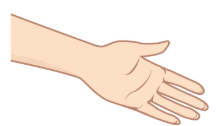 |
Carries clotting factors, platelets, and white blood cells for hemostasis, fighting infection, and repairing damage; regulates temperature by controlling blood flow to the surface, where heat can be dissipated; provides some coloration of integument; acts as a blood reservoir. |
Lymphatic
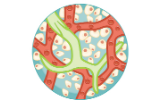 |
Transports various white blood cells, including those produced by lymphatic tissue, and immunoglobulins (antibodies) throughout the body to maintain health; carries excess tissue fluid not able to be reabsorbed by the vascular capillaries back to the lymphatic system for processing. |
Muscular
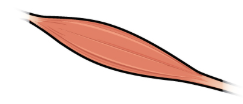 |
Provides nutrients and oxygen for contraction; removes lactic acid and distributes heat generated by contraction; muscular pumps aid in venous return; exercise contributes to cardiovascular health and helps to prevent atherosclerosis. |
Nervous
 |
Produces cerebrospinal fluid (CSF) within choroid plexuses;contributes to blood-brain barrier; cardiac and vasomotor centers regulate cardiac output and blood flow through vessels via the autonomic system. |
Reproductive
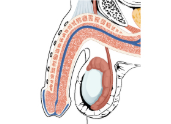 |
Aids in erection of genitalia in both sexes during sexual arousal; transports gonadotropic hormones that regulate reproductive functions. |
Respiratory
 |
Provides blood for critical exchange of gases to carry oxygen needed for metabolic reactions and carbon dioxide generated as byproducts of these processes. |
Skeletal
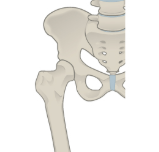 |
Provides calcium,phosphate, and other minerals critical for bone matrix; transports hormones regulating buildup and absorption of matrix including growth hormone (somatotropin), thyroid hormone, calcitronins, and parathryoid hormones; erythropoietin stimulates myeloid cell hematopoiesis; some level of protection for select vessels by bony structures. |
Urinary
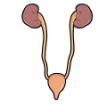 |
Delivers 20% of resting circulation to kidneys for filtering, reabsorption of useful products, and secretion of excesses; regulates blood volume and pressure by regulating fluid loss in the form of urine and by releasing the enzyme renin that is essential in the renin-angiotensin-aldosterone mechanism. |
Watch Blood Vessels, Part 1 – Form and Function: Crash Course Anatomy & Physiology #27 (10 min) on YouTube
Media 10.1: CrashCourse. (2015, July 20). Blood vessels, part 1 – Form and function: Crash Course anatomy & physiology #27 [Video]. YouTube. https://youtu.be/v43ej5lCeBo
Cardiovascular System – Blood Vessels and Blood Medical Terms
Cardiovascular System – Blood, medical terms (Text Version)
Practice the following cardiovascular system words by breaking into word parts and pronouncing.
- angioscope (angi/o/scope)
- Instrument used for visual examination of blood vessels
- arteriogram(arteri/o/gram)
- radiographic image of an artery
- phlebectomy(phleb/ectomy)
- excision of a vein
- hemolysis(hem/o/lysis)
- dissolution of (red) blood (cells)
- multiple myeloma(multiple myel/oma)
- tumours of the bone marrow
- lymphoma (lymph/oma)
- tumour of lymphatic tissue (malignant)
- thrombocytopenia(thromb/o/cyt/o/penia)
- abnormal reduction of (blood) clotting cells
- polyarteritis (poly/arter/itis)
- Inflammation of many (sites in the) arteries
- angioscopy(angi/o/scopy)
- visual examination of blood vessels
- intravenous (IV) (intra/ven/ous)
- pertaining to within a vein
- thrombophlebitis (thromb/o/phleb/itis)
- inflammation of a vein associated with a (blood) clot
- pancytopenia (pan/cyt/o/penia)
- abnormal reduction of (all) blood cells
- plasmapheresis (plasm/apheresis)
- removal of plasma
- hematopoiesis (hemat/o/poiesis)
- formation of blood (cells)
- lymphadenopathy (lymphaden/o/pathy)
- disease of lymph nodes
- thrombosis(thromb/osis)
- abnormal condition of (blood) clot
- venogram (ven/o/gram)
- radiographic image of a vein
- hematology (hemat/o/logy)
- study of blood
- aortic stenosis (aort/ic stenosis)
- narrowing, pertaining to the aorta
- angioplasty (angi/o/plasty)
- surgical repair of a blood vessel
- aortogram (aort/o/gram)
- Radiographic image of the aorta
- splenomegaly (splen/o/megaly)
- enlarged spleen
- thrombolysis (thromb/o/lysis)
- dissolution of a (blood) clot
- splenopexy (splen/o/pexy)
- surgical fixation of the spleen
- endarterectomy(end/arter/ectomy)
- Rebel does not follow the rules
- Excision within the artery
- hypothermia (hypo/therm/ia)
- condition of (body) temperature that is below (normal)
- thrombus (thromb/us)
- (blood) clot (attached to the interior wall of artery or vein)
- hematologist (hemat/o/logist)
- Physician who specializes and treats blood disorders
- thymoma (thym/oma)
- tumour of the thymus gland
- hematoma (hemat/oma)
- tumour composed of blood
- arteriosclerosis (arteri/o/sclerosis)
- hardening of the arteries
- hardening of fatty plaque (on arterial wall)
- thymectomy (thym/ectomy)
- excision of the thymus gland
- angioma (angi/oma)
- tumour composed of blood vessels
- atherosclerosis (ather/o/sclerosis)
- hardening of fatty plaque
- lymphadenitis (lymphaden/itis)
- inflammtion of lymph nodes
- myelopoiesis (myel/o/poiesis)
- formation of bone marrow
- angiography(angi/o/graphy)
- radiographic imaging of blood vessels
- angiostenosis (angi/o/stenosis)
- narrowing of a blood vessel
- hemostasis (hem/o/stasis)
- stoppage of bleeding
- leukocytopenia (leuk/o/cyt/o/penia)
- abnormal reduction of white (blood) cells
- splenectomy (splen/ectomy)
- Excision of the spleen
- phlebotomy (phleb/o/tomy)
- incision into a vein
- phlebitis(phleb/itis)
- inflammation of a vein
- erythrocytopenia (erythr/o/cyt/o/penia)
- abnormal reduction of red (blood) cells
- atherectomy (ather/ectomy)
- Excision of fatty plaque
Activity source: “Cardiovascular System – Blood, medical terms” by Kimberlee Carter, licensed under CC BY- 4.0 from “Cardiovascular System – Blood Vessels and Blood” in Building a Medical Terminology Foundation by Kimberlee Carter and Marie Rutherford, licensed under CC BY- 4.0. / Converted to Text.
Attribution
Except where otherwise noted, this chapter is adapted from “Cardiovascular System – Blood Vessels and Blood” in Building a Medical Terminology Foundation by Kimberlee Carter and Marie Rutherford, licensed under CC BY 4.0. / A derivative of Betts et al., which can be accessed for free from Anatomy and Physiology (OpenStax). Adaptations: dividing Cardiovascular System – Blood Vessels and Blood chapter content into sub-chapters.

